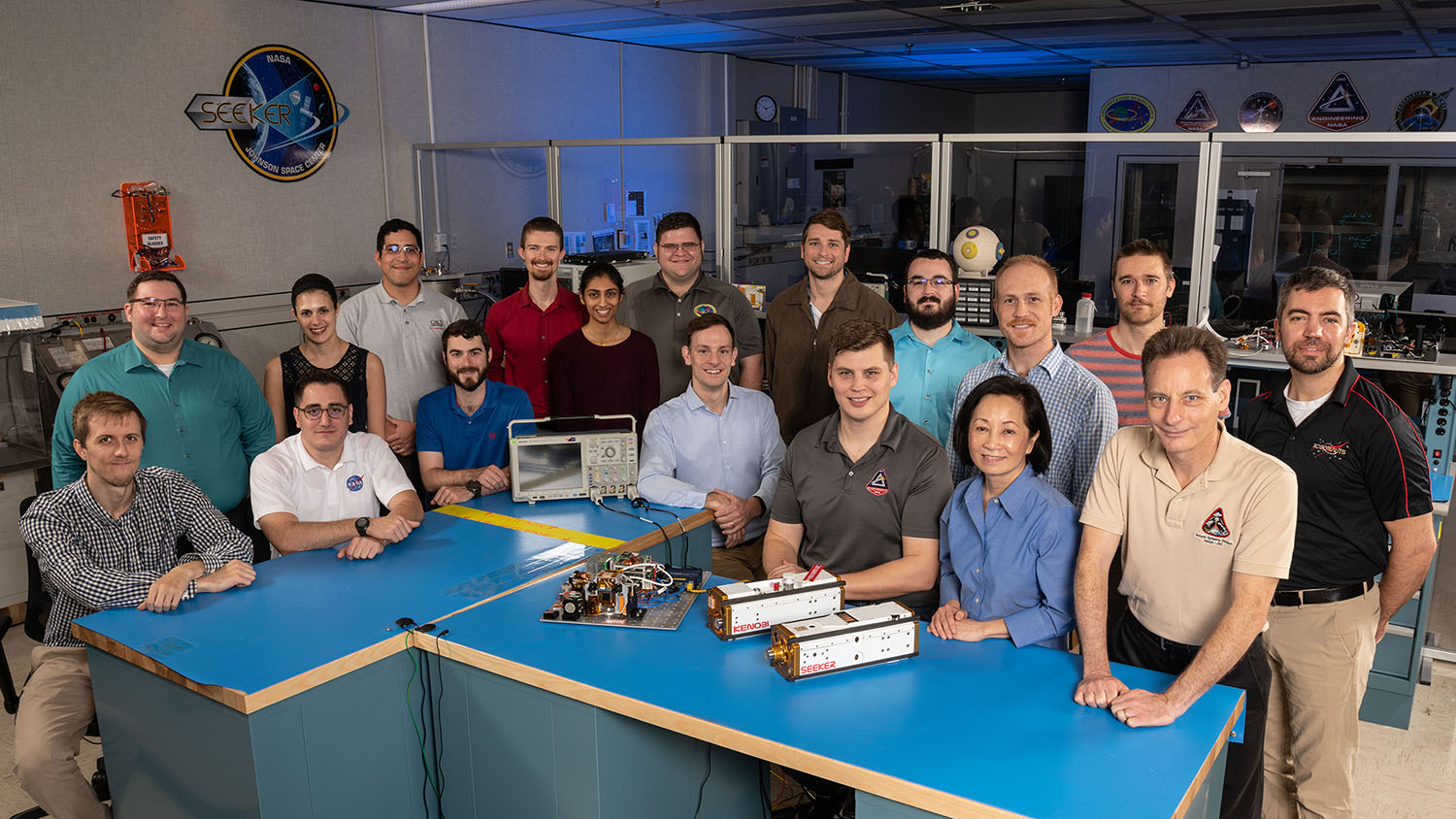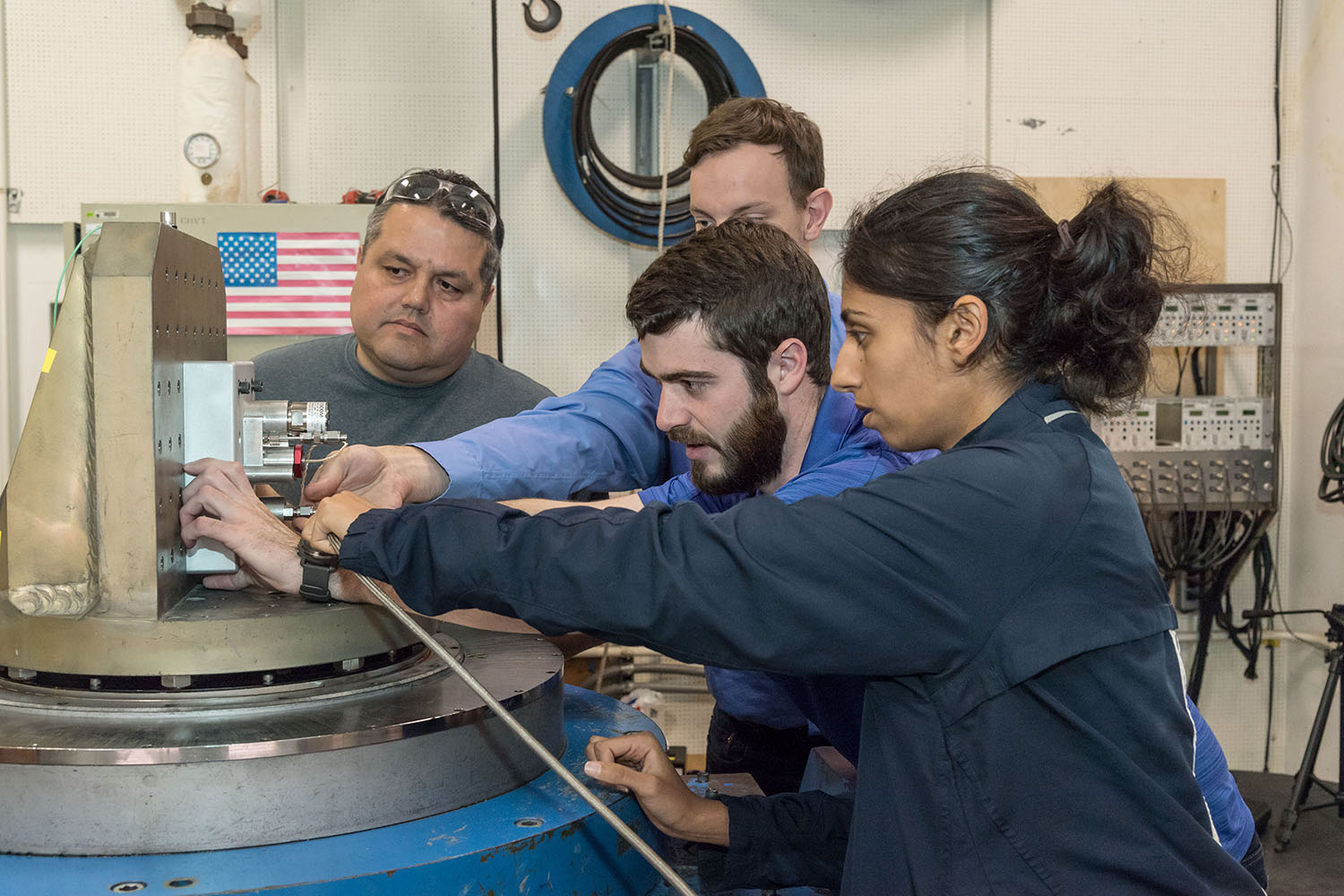Project X - Seeker
NASA’s Johnson Space Center is poised to launch Seeker, an external, free-flying robot debuting a more agile, quick-turnaround-type of development for space hardware.
Seeker, which was green-lit in September 2017 will be the first “X Project” out of Johnson Space Center to launch to the International Space Station (ISS) and perform in low Earth orbit. “X Projects” are conceived with the intention of having an expedited time frame from concept to deliverable, whereas the average payload can take about YEARS to make it from conception to the ISS, Seeker will have done it is under two years.
With this expedited process comes increased risk and higher stakes.“We knew early on we’d be faced with a lot of decisions where we didn’t have the time or resources to get the data we’d like to have to make a choice,” says Seeker Deputy Project Manager Brian Banker.

The team with Seeker and Kenobi flight hardware. Image Credit: NASA
When facing high stakes decision that could make it more challenging to succeed, Banker says the key is to just make a decision. “Tomorrow we can fix any mistake we make today, but we can’t fix it if we don’t make the decision that gets us to tomorrow,” said Banker.
Though Seeker launched to the ISS aboard a Cygnus spacecraft on April 17, due to the uncharted territory of operating small robotic spacecraft around human spacecraft, Seeker will remain mounted to the Cygnus for the duration of its stay on ISS and will execute its maneuvers around the Cygnus once it is a safe distance away from the International Space Station following its undocking.
Seeker will take several 13 megapixel images of Cygnus to demonstrate the vehicle’s core inspection capabilities then perform several physical maneuvers such as flying towards and away from Cygnus and exercise it’s roll, pitch, and yaw attitude maneuvers. After demonstrating Seeker’s ability to recognize and obey a keep-out zone, Seeker’s response to loss of communication, and some advanced attitude maneuvers, Seeker will be commanded to fly away in a disposal trajectory and burn up in the atmosphere.

From right to left: Pooja Desai, Matt Atwell, and Chris Radke behind Atwell of the Seeker team working on the high pressure system with a technician from JSC’s Energy System Testing Area (ESTA). Image Credit: NASA
Banker hopes that through Seeker’s work with the safety community, NASA will be able to set guidelines to one day operate future small spacecraft around human spacecraft and encourage others to explore the possibilities with such types of projects. Today, Seeker features a high-resolution optical camera for taking still images and one lower resolution camera for video. This sensor package could easily grow to include (for starters) infrared cameras and gas detection sensors to enable small spacecraft to perform other mission-critical inspections. Banker predicts that one day small extra-vehicular spacecraft will be a vital part of space exploration.
Rose Pendley
NASA Johnson Space Center








